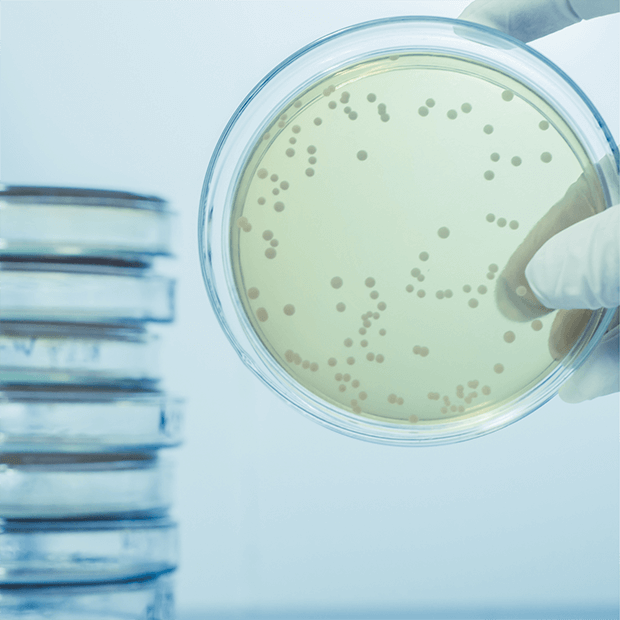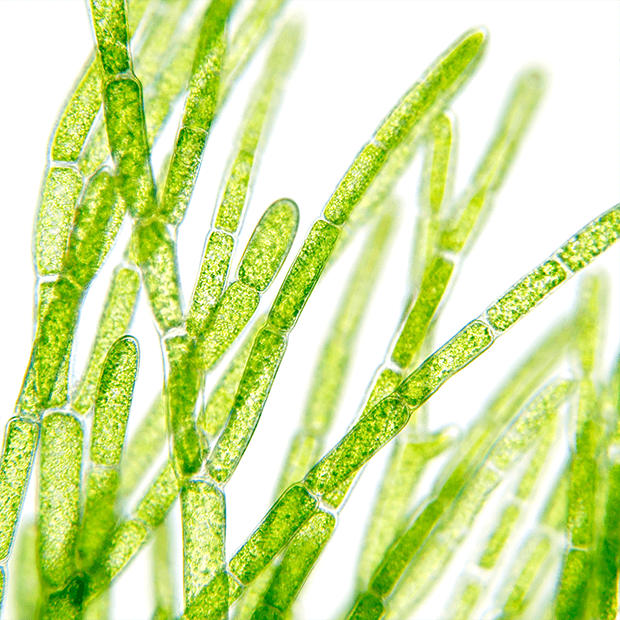LEADERS IN RESEARCH, DEVELOPMENT AND INNOVATION


Research, development and innovation (R&D+I)
Since Futureco Bioscience was founded in 1993, the R&D&I Department has been researching and developing products based on natural extracts and microbial agents with biostimulant or biopesticide activity.
The R&D department has a high screening capacity to select biostimulant microorganisms for plant biological functions, or microorganisms with biopesticidal activity (CBAs) for the control of fungi (biofungicides), bacteria (biobactericides), insects (bioinsecticides) or pathogenic nematodes (bionematicides), both in vitro, ex vivo and in vivo.
More than 1,500 in vitro bioassays and 200 ex vivo bioassays are conducted annually, selecting the most effective and innovative active ingredients and CBAs. In addition, around 300 in vivo (in-plant) bioassays are carried out annually in climatic chamber or greenhouse conditions, where both the selected active ingredients and their formulations are evaluated and validated. This capability makes Futureco Bioscience one of the most active companies worldwide in the development of biostimulants and biopesticides.
Today, as a result of investment in R&D+I, 45% of the company’s staff is made up of research staff.
The department's main lines of research are:
R&D+I projects
NOFLY
NOPIC
NONEM
MICROSAFE
ENZYTECH
INNOLIVAR
PALVIP
FUTUROMICS
Forthcoming launches

Partner organisations
Ecoletters
Citogrower 2% increases the size, number and weight of fruits on avocado crops
Hectares treated with CITOGROWER® 2% averaged 2210 kg/ha while those treated with control averaged 1922.5 kg/ha. That is, CITOGROWER® 2% achieved a difference of 287.5 kg/ha: 13% increase in production per hectare.
How to improve cucumber curdling and rice fattening with Ecormon
In fattening rice, Ecormon showed a significant increase in fruit set, number of grains per panicle and total grain yield. Ecormon showed a higher number of flowers, fruit per plant and cucumber fruit set.
Bioradicante not only increases root germination and length
Transcriptomic analysis has shown that Bioradicante stimulates nitrate uptake and modulates cell membrane and cell wall dynamics, key to the growth and development of the root system and consequent aerial growth.
Yield increase in Criolla potato crop (Solanum phureja) with Botamisol 45
The objective is to evaluate the efficacy of the biostimulant Botamisol 45 in the cultivation of Criolla potato (Solanum phureja).
NOFLY exceeds the biological standard efficacy and proves its relevance in the reduction of chemical treatments
The aim of this work was to evaluate the efficacy of NOLFY WP alone and in combination with Pyriproxyfen and Acetamiprid as an integrated pest management approach, evaluating its efficacies in comparison with chemical and biological standard treatments.
Biological insecticide NOFLY is effective against whitefly in soybean
The aim of this work was to evaluate the application of NOLFY WP alone and in combination with Pyriproxyfen as an integrated pest management approach to the strategy for whitefly control in soybean, also comparing NOFLY WP efficacy with another entomopathogenic fungi based product (Beauveria bassiana).
Bestcure controls “acid rot” acetobacter aceto in grapevine
Bestcure shows highly effective results against acid rot Acetobacter aceti in grapes
CITOGROWER AND CITOFOUR remain stable for at least four years
6-BAP was quantified and pH and density were measured in batches stored for different periods of time.
HYDROMAAT REDUCES DROUGHT STRESS IMPACT ON TOMATO PLANTS
HydroMaat can effectively ameliorate drought stress in tomato. Treatments did significantly reverse drought-responses in terms of growth (shoot height, LMA), water status and osmotic response (RWC and proline) as well as reduced the effect of drought on photosynthesis.
Efficacy of BESTCURE® against bacterial spot and early blight on tomatoes
BESTCURE® showed a high bactericidal potential on tomato against Xanthomonas compestris pv versicatoria and Alternaria solani.
Articles
No antibiotic and toxic metabolites produced by the biocontrol agent Pseudomonas putida strain B2017
Written by Oriol Daura-Pich, Iker Hernandez, Lola Pinyol-Escala, Jose M. Lara, Sonia Martínez-Servat, Carolina Fernandez and Belén López-García. FEMS Microbiology Letters, 367, 2020.
Design of Bacterial Strain-Specific qPCR Assays Using NGS Data and Publicly Available Resources and Its Application to Track Biocontrol Strains
Written by Iker Hernández, Clara Sant, Raquel Martínez and Carolina Fernández. Evolutionary and Genomic Microbiology, a section of the journal Frontiers in Microbiology, 1-11 (English) 2020
Diseño y evaluación de prototipos bioinsecticidas para el control de la mosca del olivo
Escrito por M. Almazán1, V. Quero1, L. Pinyol–Escala1, M. Caminal1, S. Martínez–Servat1, e. Quesada–Moraga2, I. Garrido–Jurado2, M. Yousef–Naef2, J.M. lara1, C. Fernàndez1. Revista de Fruticultura • Nº73 2020.
Pseudomonas putida strain B2017 produced as technical grade active ingredient controls fungal and bacterial crop diseases
Written by Clara Oliver, Iker Hernández, Marta Caminal, José M. Lara & Carolina Fernàndez. Taylor & Oliver, 2019
Draft Genome Sequence and Assembly of a Lysobacter enzymogenes Strain with Biological Control Activity against Root Knot Nematodes
Written by Iker Hernández, Carolina Fernàndez. Genome Announc, Vol. 5, 2017.
Control of blue mould and bitter rot of apples, and brown rot of peaches by Citrus aurantium extractbased product BIOLASTING®
Written by M. Almazána, J.M. Lara and C. Fernández. Acta Horticulturae, 1-8, 2015.
Natural occurrence of fungal egg parasites of root-knot nematodes, Meloidogyne spp. in organic and integrated vegetable production systems in Spain
Written by Giné A., Bonmatí M., Sarro A., Stchiegel A., Valero J., Ornat C., Fernández C. & Sorribas F.J. BioControl, 58, 407-416 (Català) 2013
Evaluación in vitro de la capacidad antagonista de Trichoderma lignorum FEEP TL0601 frente a Fusarium oxysporum f.sp. lycopersici
Escrito por Sarro A., Lara J.M. & Fernández C. Phytoma 225, 47-50 (Español) 2011




























